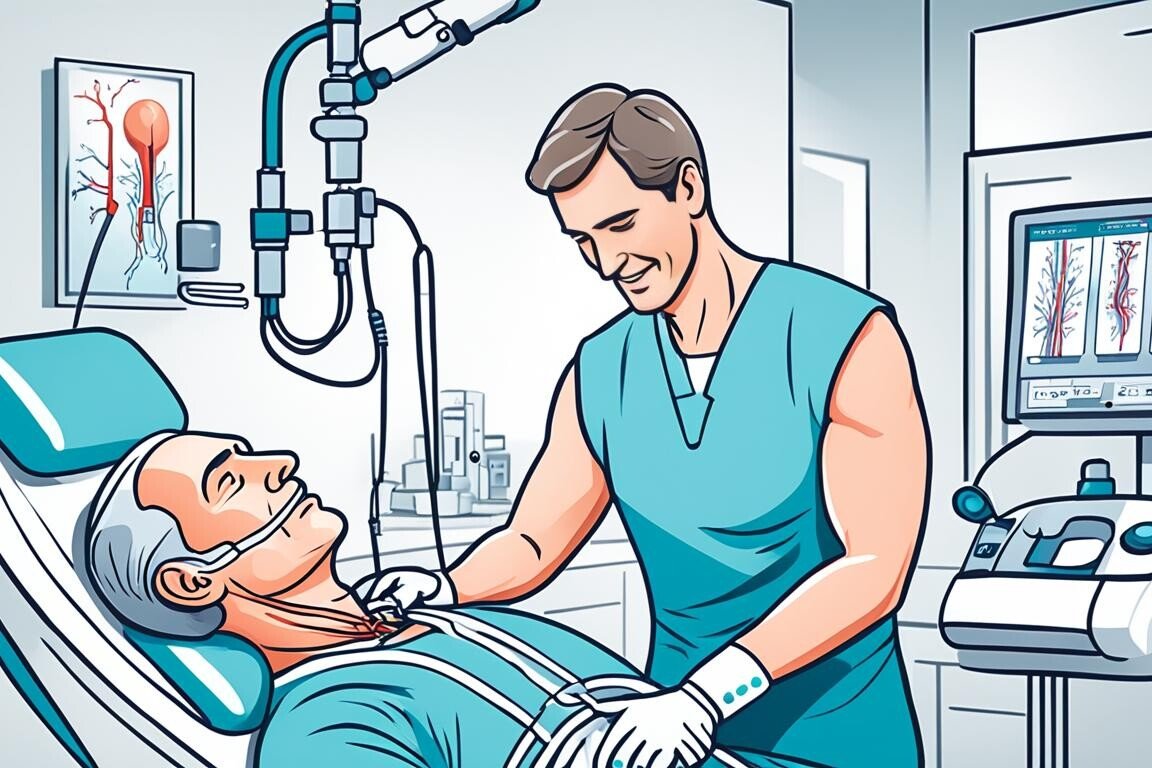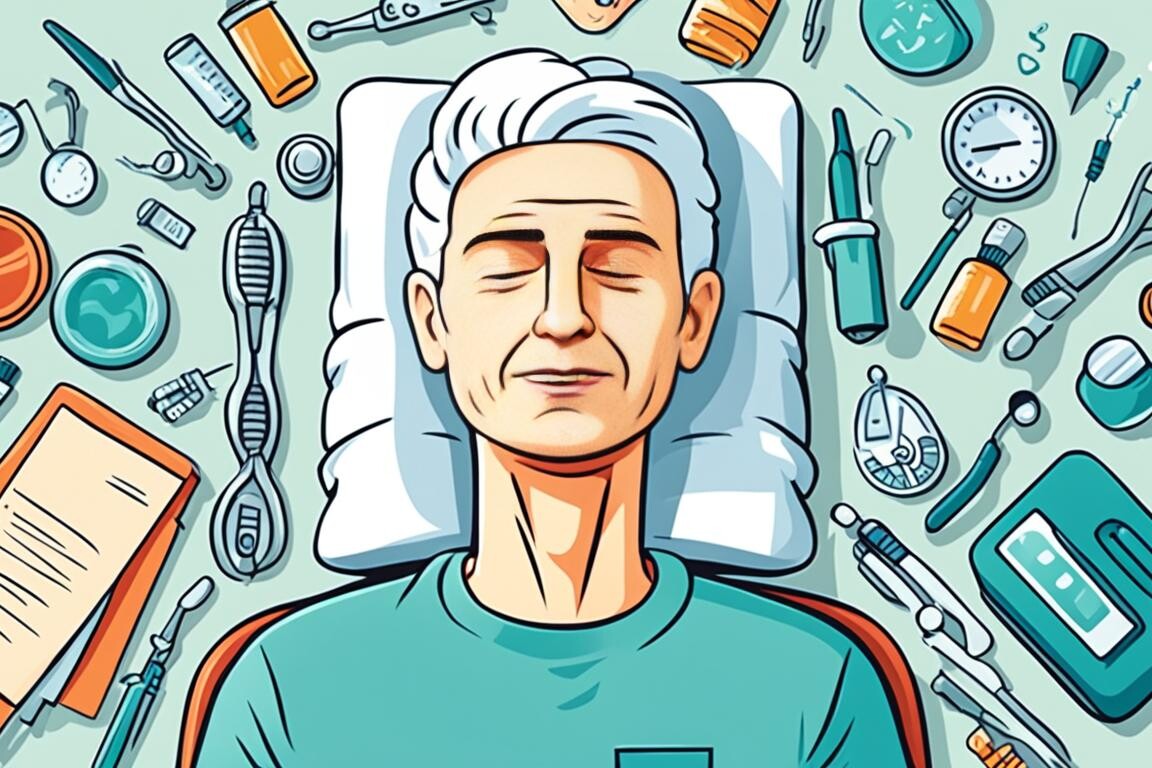Chronic pain affects about 15% of people in the US, causing a lot of suffering and high healthcare costs. It’s important to treat pain fully, looking at the biological, psychological, and social sides. Programs that bring together different experts can really help manage chronic pain and its effects.
Handling pain well means using many kinds of therapy together. This includes physical therapy, occupational therapy, pain psychology, and more. The goal is to lessen the need for opioids, which have been overused and led to the opioid crisis. Now, doctors focus on non-drug treatments, teaching about pain, and helping patients get back to their lives.
By using good pain management strategies, doctors in India can help people with chronic pain. They can get their lives back, feel better physically and emotionally, and lessen the cost to society. Working together, we can find better ways to manage chronic pain for good.
Table of Contents
ToggleThe Burden of Chronic Pain
Prevalence and Impact on Quality of Life
Chronic pain affects about 15% of people in the US. It can really change someone’s life, making it hard to do everyday tasks and enjoy social activities. It also causes emotional pain, making life less fulfilling.
Economic Costs and Lost Productivity
Chronic pain costs the US healthcare system between $100 to $150 billion a year. This number might be low because it doesn’t include lost work time. Conditions like arthritis and nerve pain add a lot to healthcare costs and lost productivity.
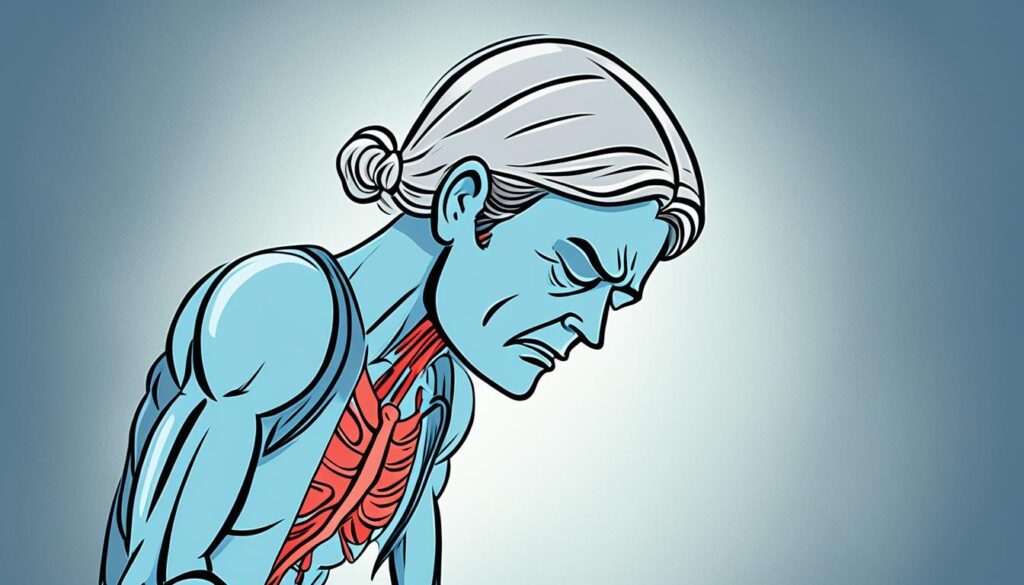
We need to tackle chronic pain to help people feel better and save money. Using a mix of treatments that look at the whole person is key. This approach can make life better for those in pain and ease the economic strain.
Understanding Comprehensive Pain Management
Managing chronic pain well means more than just treating the body. The biopsychosocial model of pain shows that chronic pain comes from a mix of biology, mind, and social factors. Over time, these factors keep the pain going, making people less active, isolated, and feeling out of control.
The Biopsychosocial Approach
A chronic pain management approach based on this model looks at pain from all angles. It brings together doctors, psychologists, physical therapists, and others to make a plan just for you. This way, they tackle the physical, mental, and social sides of pain. It helps people with chronic pain live better, do more, and handle their pain better.
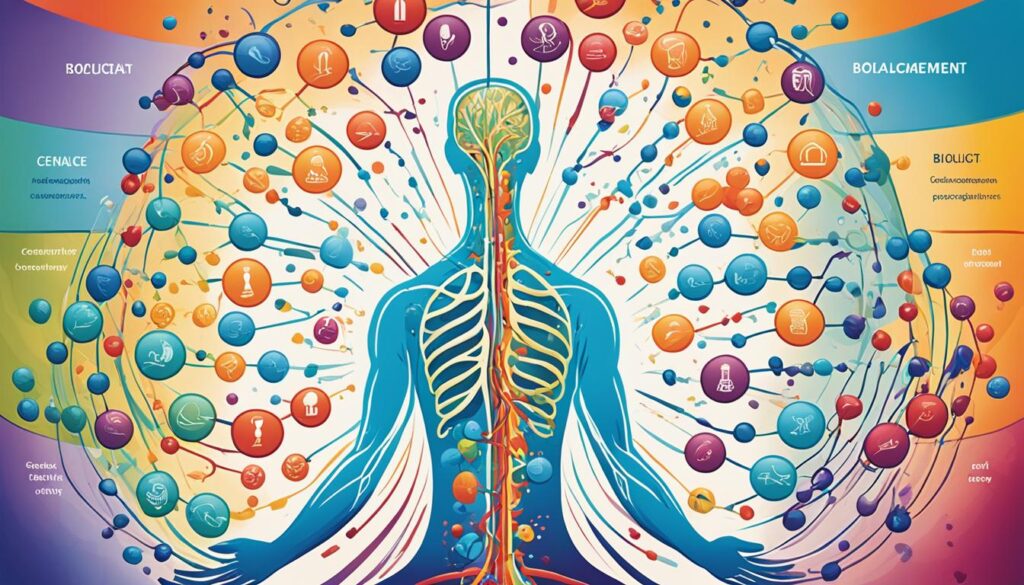
The biopsychosocial model sees chronic pain as more than just a body issue. It’s a mix of many things. This view helps doctors make better, tailored treatment plans for their patients. It helps them meet the special needs and challenges of each person.
Interdisciplinary Care: A Cornerstone of Comprehensive Pain Management
Managing pain well often means working together as a team. This team looks at the many factors that cause pain. They focus on the body, mind, and social aspects that can make pain worse. The team includes doctors, psychologists, physical and occupational therapists, and others.
The main advantages of this team approach are:
- Comprehensive assessment and treatment planning: With many experts, patients get a full check-up. This looks at physical, emotional, and social factors that affect pain.
- Coordinated care delivery: Teams work together to make sure treatments work well together. This helps give the best pain relief and helps patients function better.
- Improved patient outcomes: Studies show that team-based pain care improves life quality and lessens chronic pain for patients.
Using an interdisciplinary pain management approach helps doctors give a full, personal care plan. This way of treating pain is key to managing it well. It leads to better health results and a better life for patients.

Physical Therapy for Pain Relief
Physical therapy is key in managing pain well. At the start, your therapist will set goals with you. These goals focus on improving flexibility, strengthening your core, and using aquatic therapy. These methods can help reduce your chronic pain and boost your physical function.
Core Strengthening and Flexibility
Targeted core exercises can help a lot with chronic pain. They make your core muscles stronger and more stable. This reduces strain on your joints and spine, lowering pain.
Adding flexibility exercises can also help. They make moving easier and reduce stiffness and tightness. This can lessen the discomfort you feel.
Aquatic Therapy
Aquatic therapy, or water-based physical therapy, is a safe and effective pain management tool. The water lets you do exercises that are hard or painful on land. It also helps strengthen muscles and improve physical fitness.
Working with your physical therapist to create a plan that includes core exercises, flexibility, and aquatic therapy can greatly help. It’s a big step towards managing your chronic pain and improving your life quality.
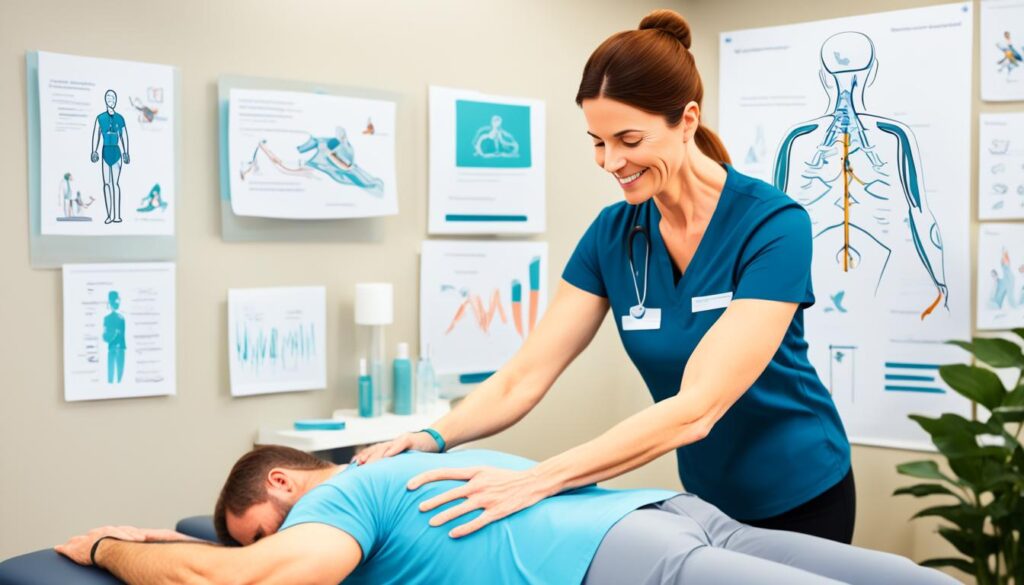
Psychological Interventions
Chronic pain can really affect a person’s mental health, causing depression, anxiety, and bad coping habits. Luckily, things like cognitive behavioral therapy (CBT) and relaxation techniques can help a lot with psychological pain management.
Cognitive Behavioral Therapy
CBT is a great way to change negative thoughts and find better ways to cope with chronic pain. It looks at the mental and behavioral things that make pain worse. This can really make someone’s life better and help with cognitive behavioral therapy for chronic pain.
Relaxation Techniques
Relaxation techniques are also key for managing chronic pain. Things like deep breathing, meditation, and guided imagery can ease muscle tension and make you feel calmer. These relaxation techniques for pain are often taught in groups, which helps people learn and practice together.
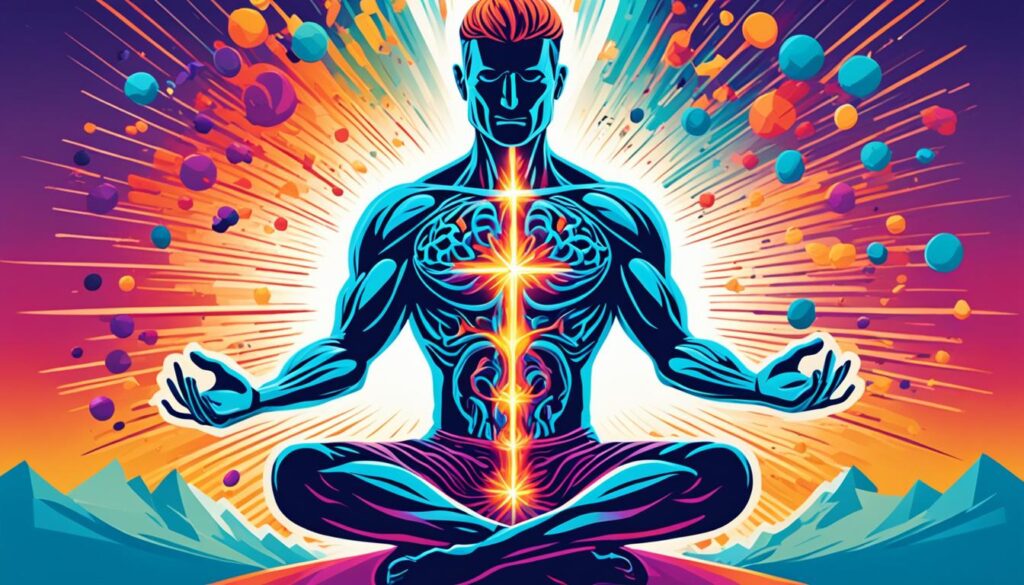
Using both cognitive-behavioral and relaxation methods, people with chronic pain can get a full set of tools to handle their condition. Adding these psychological interventions is a big part of comprehensive pain management.
Comprehensive Pain Management
Finding the right way to manage chronic pain can greatly improve your life. Many programs now use group education to help. These sessions offer insights and create a supportive community for those with ongoing pain.
Group Education and Support
Group education is a key part of pain management programs. It covers topics like nutrition, stress reduction, and how pain affects your health. These sessions are interactive, letting people share their stories and learn from each other.
Group sessions create a sense of community. They offer motivation, information, and emotional support. People can connect with others who understand their pain, reducing the feeling of being alone.
The goal of these programs is to empower participants. They aim to engage people fully, improve comfort and function, and boost self-confidence. The programs also focus on safe and effective treatments, reducing the use of opiates, and overcoming barriers to care. They measure the success of treatments for the best results.
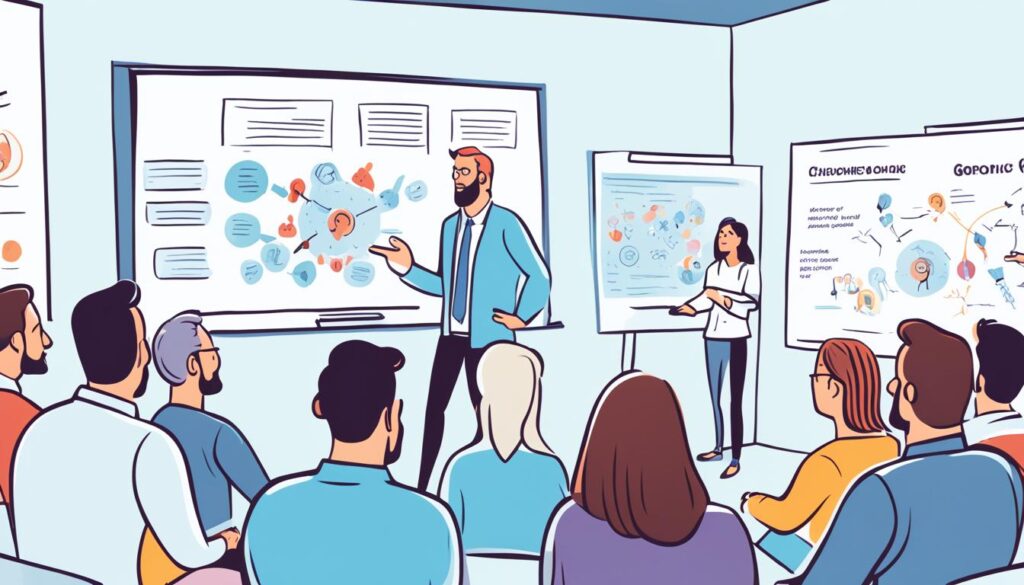
Along with group sessions, the program includes many therapies. These include acupuncture, massage, movement classes, mindfulness, and occupational therapy. By tackling physical, emotional, and social aspects of pain, these approaches help people take back control and enhance their well-being.
Occupational Therapy for Daily Living
Occupational therapy is key in managing pain by making daily activities easier. Therapists help patients overcome the challenges pain brings. They aim to make patients more independent and improve their life quality.
Occupational therapy (OT) helps people do everyday tasks. Chronic pain can make it hard, leading to less independence and mental health issues. To manage pain well, we need a plan that covers physical, mental, and social aspects.
Occupational therapists focus on making life better for those with chronic pain. They look at how pain affects daily life, skills, and work. Then, they create plans with different steps, like:
- Activity analysis and modification
- Ergonomic assessments and recommendations
- Pain education and self-management techniques
- Stress management and relaxation strategies
- Therapeutic exercises and adaptive tools
These steps help people take back control of their lives. They make daily tasks easier and lessen the pain’s effect. Occupational therapy works with many healthcare experts for a full approach to managing chronic pain and daily activities.
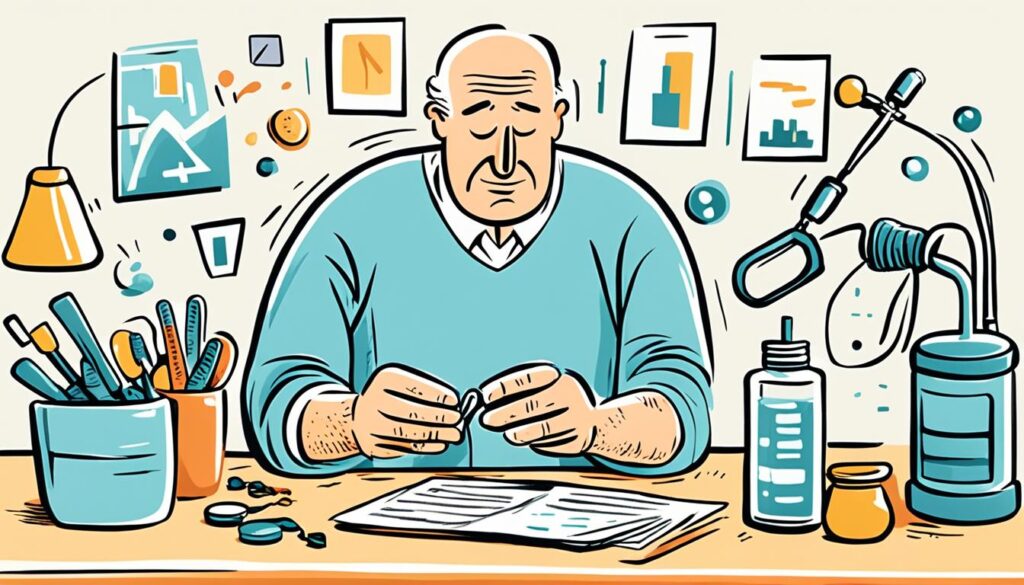
Medication Management
Managing pain with the right medications is key. Opioid analgesics and non-opioid pain relievers are both vital. But, it’s crucial to work with your doctor to avoid side effects or addiction risks.
Opioids and Non-Opioid Analgesics
Opioids like morphine and oxycodone help with severe pain after surgery. Nonsteroidal anti-inflammatory drugs (NSAIDs) are great for mild to moderate pain. They reduce inflammation and pain without the risk of addiction.
Over-the-counter pain relievers, such as acetaminophen, can also ease post-surgery pain. They help without causing stomach problems like NSAIDs can. Your doctor might suggest local anesthetics or PCA and PCEA for targeted pain relief during recovery.
Your healthcare team will create a plan just for you. They’ll mix the right medications, treatments, and therapies to help you stay active and healthy. Keeping in touch and regular checks are key to making sure your pain plan works well.
Complementary and Alternative Therapies
People looking for ways to manage pain might want to check out acupuncture and massage therapy. These methods can be used along with regular medical treatments. They offer a full approach to easing pain and boosting health.
Acupuncture for Chronic Pain
Acupuncture is a traditional Chinese medicine that helps with chronic pain. It might ease pain by boosting the body’s own pain fighters and helping you relax. Studies show mixed results, but it’s safe if done by a trained expert.
Massage Therapy for Pain Relief
Massage therapy is another way to help with pain. It can ease muscle tightness, improve blood flow, and help you relax. Adding regular massages to your pain plan might be really helpful.
Always talk to your doctor before trying new therapies. They can affect your medicines or have other risks. By trying different treatments, you can better manage your pain and live a better life.
Pain Neuroscience Education
Pain neuroscience education is key to managing pain well. It helps patients understand the complex ways chronic pain works. This knowledge lets them take a bigger part in their care, which can lead to better results.
Studies show that teaching patients about pain can change their beliefs and behaviors for the better. It helps with chronic pain from low back pain, chronic fatigue, and musculoskeletal issues.
The Fear-Avoidance model of chronic pain shows how important it is to change how patients see and believe about their pain. By learning about pain’s neurophysiology, patients can feel less fear. This leads to better beliefs about pain and a more active way of managing it.
Also, pain neuroscience education can save money. Patients who learned about pain before surgery spent less on care after surgery. If this was done across the country, it could save $1.2 billion a year.
- Pain neuroscience education improves pain beliefs and behaviors in patients with chronic pain.
- Comprehensive pain management strategies should incorporate pain neuroscience education to empower patients and improve outcomes.
- Cost savings associated with pain neuroscience education highlight its potential for healthcare system-wide impact.
By teaching patients about their chronic pain, healthcare providers can help them understand their condition better. This encourages patients to take a more active role in managing their pain. It not only improves their health but also could lessen the economic burden of chronic pain.
Functional Restoration Programs
Functional restoration programs help people with chronic pain get back on their feet. They focus on making people stronger and more able to do daily tasks. These programs tackle chronic pain from many angles, aiming to boost strength, endurance, and overall health.
At the heart of these programs are a team of experts. They include occupational therapists, physical therapists, chronic pain specialists, and care coordinators/social workers. Together, they craft treatment plans that fit each person’s needs.
- The program lasts around 4 weeks.
- Participants learn in group sessions how to handle their pain and manage it better.
- Tests like measuring how far you can move, treadmill tests, and lifting tests check your current abilities. They help plan your rehab.
- Success in these programs requires commitment and effort. Changing habits, building strength, and reducing pain are key.
Joining a functional restoration program can help people with chronic pain. They can get their physical abilities back, improve their daily life, and better their quality of life. The program’s focus on personal care and group support helps people take charge of their recovery and manage pain better.
For those looking to lessen chronic pain and improve daily life, functional restoration programs are a great choice. They cover physical, mental, and social aspects of pain. This holistic approach can lead to lasting improvements in well-being.
Opioid Stewardship and Safe Prescribing
The opioid crisis has made pain management programs focus on opioid stewardship and safe prescribing. Opioids carry risks like addiction and overdose. So, it’s key to look for other ways to manage pain and use opioids only when really needed.
Opioid stewardship means following guidelines to use opioids wisely. Healthcare providers learn how to prescribe opioids right. They watch patients for misuse signs and try to lower the risks.
Key Elements of Opioid Stewardship
- Careful patient selection and risk assessment before starting opioid therapy
- Using non-opioid pain management first, like physical therapy and psychological help
- Prescribing the smallest dose of opioids and limiting how long they’re used
- Watching patients for signs of opioid misuse and acting fast if needed
- Using tools to track opioid prescriptions and find misuse
- Teaching patients and their families about safe opioid use and disposal
By taking a full approach to opioid stewardship, healthcare providers can manage chronic pain safely. This helps reduce opioid risks. It leads to better patient outcomes and fewer opioid-related problems.
Personalized Treatment Plans
Managing chronic pain well means creating plans that fit each person’s unique needs. These plans mix different treatments like medicine, physical therapy, and mental health support. This approach helps tackle the complex nature of pain.
Creating a good pain management plan means working together, understanding what triggers pain, and choosing the right treatments. It’s about using a mix of medicine, physical therapy, and other methods. By making plans that fit each person, doctors can make chronic pain treatment more effective and improve results for patients.
Conclusion
Chronic pain is a complex issue that needs a comprehensive approach. It involves looking at the biological, psychological, and social sides of pain. This often means working together with a team of healthcare experts.
By using different ways to manage pain, people with chronic pain can improve their lives. They can take back control of their health and well-being. This includes things like physical therapy, talking therapies, managing medicines, and using other therapies.
Research is always looking for new ways to help with chronic pain. This leads to better treatments that tackle pain from all angles. As we learn more, we can offer more effective ways to manage pain.
Healthcare workers and those making policies need to focus on a full and team-based way to handle pain. By letting people take part in their care and offering many treatment choices, we can help those with chronic pain live better lives. They can enjoy life more and not be held back by pain.
FAQ
What is the prevalence and impact of chronic pain in the US?
Chronic pain affects about 15% of people in the US. It causes a lot of suffering and costs a lot of money each year. The costs range from 0 to 0 billion. It can make life hard, affecting how people move, socialize, and feel.
What is the comprehensive pain management approach?
This approach looks at pain from a biological, psychological, and social view. Over time, the mind and social factors play a bigger role in keeping pain going. This can lead to less activity, feeling alone, and feeling like you can’t control the pain.
How do interdisciplinary treatment programs help manage chronic pain?
These programs combine different types of treatment to tackle pain from all angles. They involve doctors, psychologists, physical therapists, and others working together. This helps address the many factors that keep pain going.
What is the role of physical therapy in comprehensive pain management?
Physical therapy is key in managing pain. It sets specific goals for each patient, focusing on flexibility, core strength, and water therapy. These methods help reduce pain and improve how well you can move.
How do psychological interventions help manage chronic pain?
Psychological help, like cognitive behavioral therapy and relaxation, is crucial. These methods change negative thoughts and teach coping skills. Relaxation techniques also help by easing muscle tension and calming the nervous system.
What is the role of group education and support in comprehensive pain management?
Group sessions teach patients about managing pain, including nutrition, stress, and how pain affects health. They also encourage sharing and motivation, creating a supportive community.
How does occupational therapy contribute to chronic pain management?
Occupational therapy helps patients adapt to daily life despite pain. Therapists help patients overcome pain’s impact on daily tasks. This improves independence and life quality.
What is the role of medication management in comprehensive pain management?
Managing medications is crucial in pain care. Both opioids and non-opioids are used to ease pain. Working closely with doctors is key to finding the right treatment to avoid side effects or addiction.
How can complementary and alternative therapies be integrated into a comprehensive pain management plan?
Therapies like acupuncture and massage can add to pain care. They help lessen pain and promote relaxation, supporting other treatments for better pain relief.
What is the importance of pain neuroscience education in comprehensive pain management?
Learning about pain’s science is vital. It helps patients understand their pain better. This knowledge lets them take a bigger part in their care, leading to better results.
What is the role of functional restoration programs in chronic pain management?
These programs aim to boost physical and functional abilities in those with chronic pain. They focus on building strength, endurance, and physical fitness. The goal is to help patients live fuller lives.
How do comprehensive pain management programs address opioid stewardship and safe prescribing?
These programs focus on careful opioid use due to addiction risks. They look for other ways to manage pain safely. Opioids are used only when really needed and closely monitored.
How do comprehensive pain management programs tailor treatment plans to individual needs?
These programs create plans that fit each patient’s unique needs and likes. They mix different treatments, like medication, physical therapy, and psychological help, to tackle pain from all sides.
Source Links
- Comprehensive pain management as a frontline treatment to address the opioid crisis
- Long-term effectiveness of a comprehensive pain management program: strengthening the case for interdisciplinary care
- Is Pain Management Right for Me?
- Introducing the comprehensive pain management editorial series
- Introducing the comprehensive pain management editorial series | Brazilian Journal of Physical Therapy
- The Cost and Burden of Chronic Pain
About The Author

This article is medically reviewed by Dr. Chandril Chugh, Board-Certified Neurologist, providing expert insights and reliable health information.
Dr. Chandril Chugh is a U.S.-trained neurologist with over a decade of experience. Known for his compassionate care, he specializes in treating neurological conditions such as migraines, epilepsy, and Parkinson’s disease. Dr. Chugh is highly regarded for his patient-centered approach and dedication to providing personalized care.
→ Book a consultation to discover which remedies suit your needs best.



